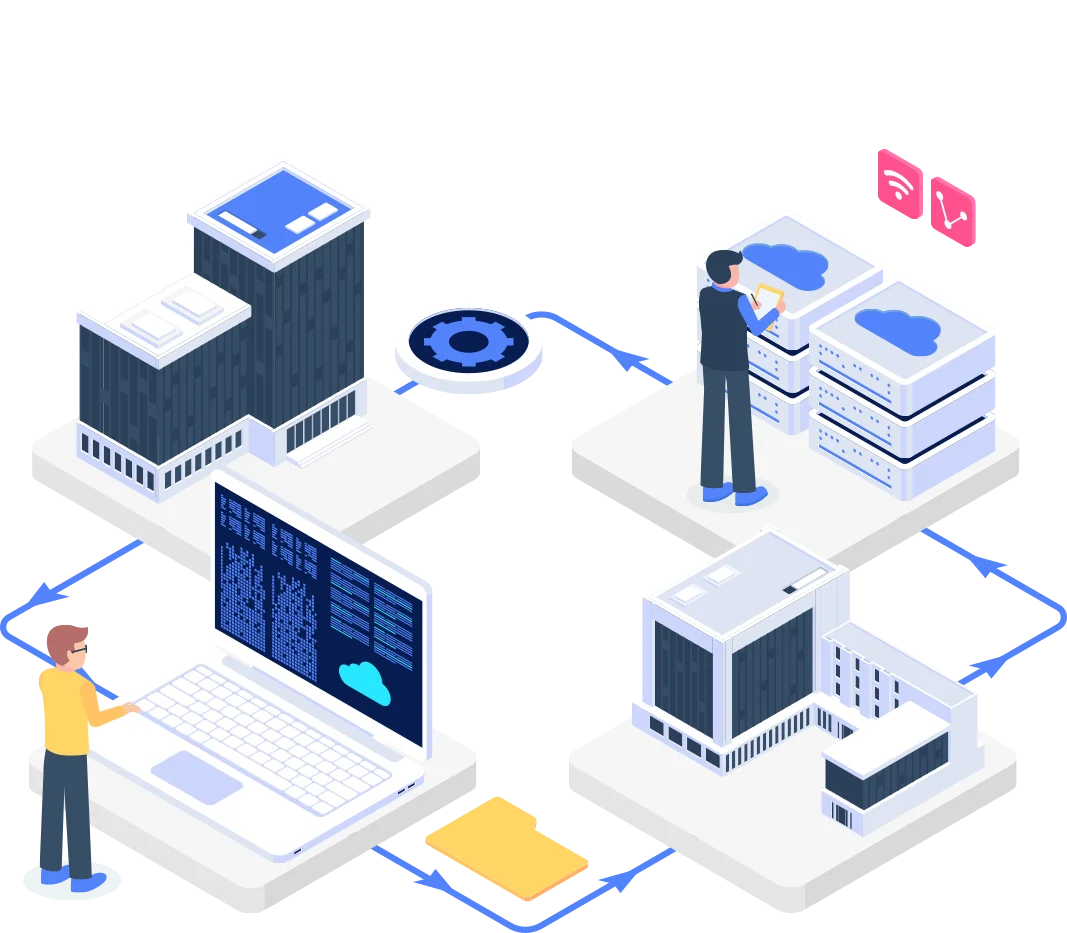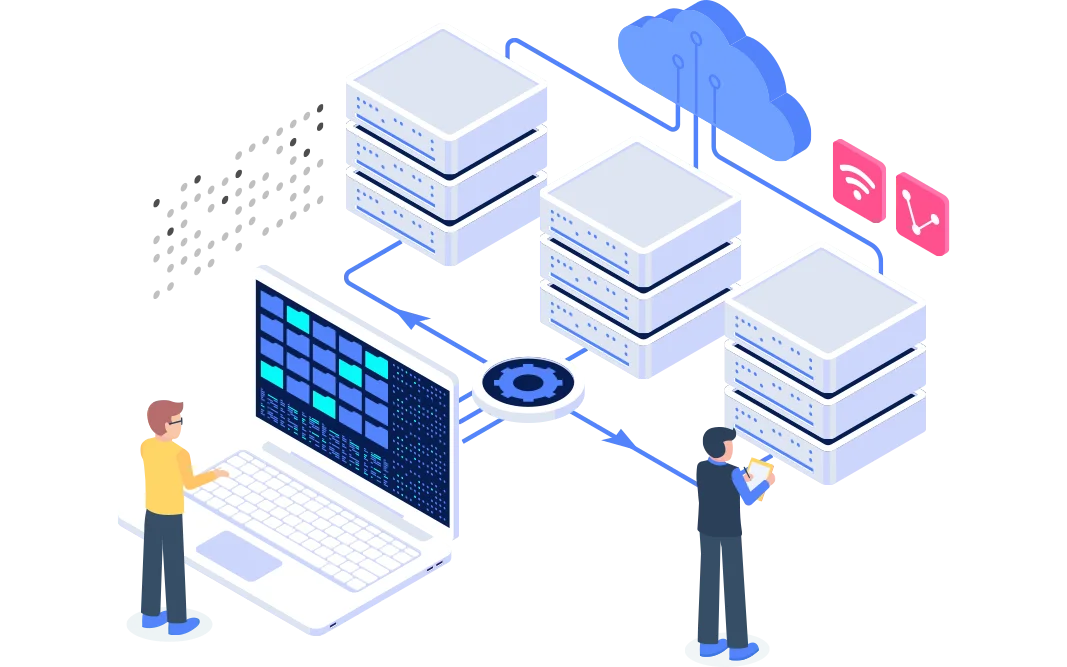Case Study: Multi-Data Centre Network Transformation
Discover how we designed and developed a more scalable, efficient infrastructure for a UK-based telecommunications service provider.

Overview
We designed and delivered a next-generation network architecture for a leading UK-based provider of business telecoms and virtual phone number services. Facing limitations with their monolithic infrastructure, they needed a future-proof solution that could scale seamlessly and eliminate single points of failure. This case study explores their journey from a rigid, single-provider setup to a resilient, cloud-native model that supports both current demands and long-term growth.
Background
Our client's existing network relied on a single hosting provider, creating a critical vulnerability: any disruption risked widespread service outages. This setup not only constrained their ability to scale during peak demand but also posed a significant threat to business continuity. To remain competitive and meet evolving customer expectations, a fundamental transformation was essential.
Challenges
Our client's infrastructure presented three major obstacles:
- Single Point of Failure: Dependence on one hosting provider left the network exposed to unplanned outages, jeopardising service reliability and customer trust.
- Limited Scalability: A lack of modularity made it difficult to expand capacity quickly, hindering their ability to respond to growing demand and stifling long-term growth.
- Low System Resilience: The monolithic architecture lacked redundancy, increasing operational risk and reducing fault tolerance.
Solution
To address these challenges and future-proof their operations, we designed and developed a resilient, scalable network architecture using modern cloud-native technologies:
- Multi-Cloud Strategy: Workloads were distributed across multiple hosting providers, eliminating single points of failure and ensuring continuous availability through redundant systems.
- Docker Containerisation: All applications were containerised, optimising resource use and enabling consistent, portable deployments across diverse cloud environments.
- MariaDB Multi-Master Replication: Real-time, multi-master database replication was introduced to synchronise critical data across nodes, guaranteeing high availability and data consistency at scale.

Technology Stack
Our solution leveraged a combination of open-source technologies tailored to the project's needs:
- PHP: Server-side scripting for dynamic content generation and application logic management.
- MariaDB: Relational database with multi-master replication for seamless data flow and availability.
- ETCD: Distributed key-value store for configuration data and service discovery.
- Docker: Containerisation platform for portable, efficient, and scalable application deployment.
Results & Benefits
The new architecture delivered transformative outcomes, enhancing both operational efficiency and customer experience:
- Minimised Downtime: Unplanned outages reduced by over 96%, achieving near-perfect uptime.
- Rapid Scalability: Additional servers could be deployed in minutes, allowing instant capacity expansion during demand surges.
- Cost Savings: Annual hosting costs decreased by 24% through a balanced multi-cloud approach.
Before OnyxSis, a single outage could disrupt our entire operation. Their resilient architecture has given us peace of mind – our services are now always available to customers.
Impact
The transformation yielded measurable improvements aligned with our client's strategic goals:
- Unmatched Reliability: By eliminating single points of failure and introducing redundancy, service availability became consistently robust.
- Agile Scaling: The ability to adjust resources dynamically enabled our client to accommodate growth without lengthy procurement delays.
- Operational Efficiency: Automated provisioning and optimised resource use reduced overheads, freeing the team to focus on innovation and customer engagement.
Conclusion
This network transformation provided our client with a scalable, resilient infrastructure that supports their current operations and future ambitions. With single points of failure removed and agile resource management in place, they are now better equipped to navigate a fast-changing market. The result? Enhanced service reliability, improved customer satisfaction, and the flexibility to adapt swiftly to new opportunities and technological advancements.
* The testimonials on this page are paraphrased and based on client feedback. Names, roles, and identifying details have been removed to protect confidentiality.